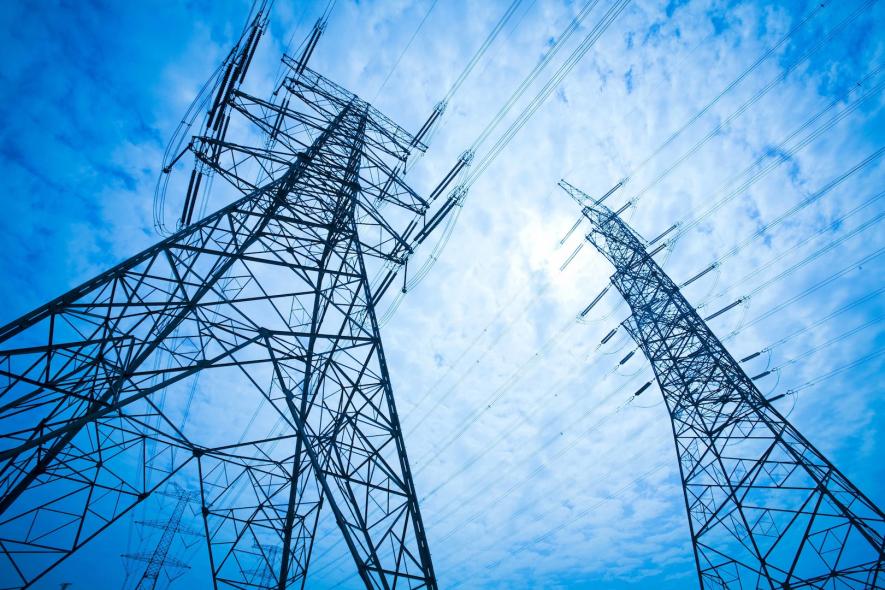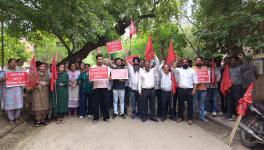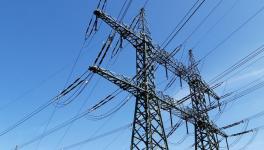Power Sector: Looming NPA Crisis Cannot Be Resolved Without Reversing 2003 Reforms

Indian banks are already saddled with bad loans so enormous that their weight, if not watched, can make the entire banking system collapse — the gross Non-Performing Assets (NPAs) of all banks crossed Rs 10 lakh crore this March, accounting for 11.6% of all loans given by all banks (public or private).
But this weight stands poised to only grow, the RBI estimates the proportion of NPAs to rise to 12.2% by next March — and the country’s power sector with its huge outstanding debt and still worsening crisis is the next biggest offender in line that the government and banks are scrambling to tackle.
The Reserve Bank of India (RBI) classifies a loan or an advance as an NPA if its interest and/or installment of principal remains overdue for a period of 90 days in respect of term loan. An asset (including a leased asset) becomes non-performing when it stops generating income for the bank.
The power sector — private/corporate power generating companies, to be specific — owes loans of more than Rs 1.74 lakh crore that are on the verge of being classified as NPAs, as stated by a recent report (37threport) of the Parliamentary Standing Committee on Energy that was presented in the Lok Sabha in March.
Also Read: The Crisis of the Power Sector Reforms – Part I
A total of 34 thermal power projects were identified by the committee as being ‘stressed’. Out of these 34 plants, 32 thermal power generating plants belong to private companies while only two are from the public sector. In fact, stressed assets made up around 17.67% (Rs. 98,799 crores) of the total advances given out in the thermal power sector (as of June 2017).
'Stressed assets’ are basically those accounts where there has been delay in payment of interest/principal by a stipulated date — although they are not yet classified as NPAs — because the borrower is facing financial difficulty.
The capacity of these stressed thermal power plants amounts to 40,130 MW. Out of the total stressed capacity, about 24,405 MW is the capacity of plants that have been commissioned (begun production) while the remaining — 15,725 MW — is under construction and/or not yet commissioned.
As outlined in the standing committee report, the 32 stressed power projects run by corporates include big names like the Adani Group — which has outstanding debt of Rs 11,765 crore on its Tirora project in Maharashtra and of Rs 3,099 crore on its Korba West project in Chhattisgarh.
Then there is the Jaypee Group, which owes the banks Rs 11,493.5 crore on account of its Bara power plant in Uttar Pradesh, Rs 6,211 crore on its Nigrie plant in Madhya Pradesh and Rs 2,253.85 crore on its Bina project, also in Madhya Pradesh.
The Lanco Group has outstanding debt of Rs 8,782 crore on its its Amarkantak power plant in Madhya Pradesh, Rs 6,976 crore on its Babandh project in Odisha, Rs 4,762 crore on its Vidarbha project in Maharashtra and Rs 3,071 crore on its Anpara project in Uttar Pradesh.
The GMR Group owes the banks Rs 2,905 crore on the Warora project in Maharashtra, Rs 8,173.9 crore on the Raikheda project in Chhattisgarh and Rs 4,100 crore on the Kamalanga project in Odisha.
Also Read: The Crisis of the Power Sector Reforms – Part II
The Essar Group has outstanding debt of Rs 5,951 crore on its Mahan power plant in Madhya Pradesh and Rs 3,112 crore on its Tori plant in Jharkhand.
The Jindal Group’s power project at Derang in Odisha has an outstanding debt of Rs 5,381 crore.
The GVK group’s Goindwal Saheb project in Punjab owes Rs 3,523 crore.
The KSK Power Group’s Mahanadi power project at Akaltara in Chhattisgarh alone has an outstanding debt of Rs 17,194 crore.
Athena power group’s Singhitarai power plant at Chattisgarh owes Rs 5,256 crore.
The Avantha Group’s Jhabua power project in Madhya Pradesh has outstanding debt of Rs 3,488 crore.
The East Coast group’s Bhavanpadu plant in Andhra Pradesh owes Rs. 2,834.09 crore.
The Adhunik Group’s Mahadev Prasad power project in Jharkhand owes 2,473.63 crore to the banks.
These are just to name a few. But how did the situation become so bad? How did these large conglomerates end up burdening the banks to such devastating degrees?
The companies have cited a few factors — which are ‘outside their control’ as they argued before the RBI — for the mess they are in, such as shortage of coal and fuel supply agreements, lack of Power Purchase Agreements (PPAs) with state-owned distribution companies, etc.
The standing committee report too identifies the major reasons for these power plants becoming stressed as such:
• Non-availability of Fuel:
– Cancellation of allotted coal blocks (in 2014, the Supreme Court had cancelled 214 coal block allocations from 1993 to 2010 declaring the allocations as illegal and arbitrary)
– Projects set up without fuel linkage
• Lack of enough PPA by states (out of the stressed commissioned capacity of 24,405 MW, there are PPAs for 16,129 MW)
• Inability of the Promoter to infuse the equity and working capital
• Contractual/Tariff related disputes
• Issues related to Banks/Financial Institutions (FIs).
• Delay in project implementations leading to cost overrun.
• Aggressive bidding by developers in PPA.
But without going into these reasons in detail here, let us be clear that these are not the reasons that gave birth to the crisis. Rather, they can be seen as other factors and even consequences of the original move that opened the floodgates for the crisis to inevitably build up and reach its current state.
The power sector crisis can be traced back to the reforms ushered in by the Electricity Act 2003 — a legislation which was meant specifically to induct and promote the private sector in power generation, as even the standing committee report admits, albeit in glowing terms.
Following the World Bank model of “unbundling”, the 2003 Act saw the trifurcation of the state electricity boards into three different sub-sectors based on their functions — generation, transmission and distribution. At present, Kerala and Himachal Pradesh are the only states that have not trifurcated their integrated state electricity boards.
The reason for this unbundling was that the private companies could then enter into the more profitable and supposedly safer aspects of the power sector, mainly generation. So while distribution remained largely with the state governments, except for a few places with more or less disastrous results, generation saw the entry of private companies enter in a huge way.
Also Read: Gujarat Government Has No Business Appeasing Corporate Power Producers, While State Suffers
As the standing committee report says, the share of private sector in the overall installed thermal power capacity grew from 13% in March 2007 to 44% in March 2017.
Most damagingly, however, in order to make it even easier for the private players, the 2003 Act brought in delicensing for thermal power generation.
This meant that any company could set up a thermal power plant — without requiring to obtain a licence first — as long as it complies with the technical standards relating to grid connectivity.
But the companies had to arrange everything else required to produce power on their own — such as land, water, procuring the coal linkage through the fuel-supply agreements, finance options, and obtaining the necessary clearances. Even the sale of power through the power-purchase agreements (PPAs) with the state-owned distribution companies (discoms) had to be arranged by the private developer of the power project through the tariff-bidding process, which was also brought in by the 2003 Act.
Still it would have remained the companies’ headache to take care of — and not spilled over to the banks — had it not been for perhaps the most devastating move of them all.
Priority sector lending of nationalised banks was made available to these private companies under the then finance minister, P Chidambaram. In any case, keeping with the overall pro-privatisation policies, the banks were encouraged to lend money to these private companies for setting up power plants. So the banks lent and lent, and the corporates kept jumping into generation one after another.
In fact, loans were taken by the private companies often without even making sure that the pre-conditions were met — such as making sure there is an assured supply of coal.
As per the coal linkage details given by the standing committee report (furnished by the power ministry), linkage is available only for 11,050 MW of capacity — out of the total 40, 130 MW stressed capacity. For 3,830 MW, coal blocks had been allotted but are under dispute; 1,800 MW are working with imported coal; for 7,725 MW linkage is still required while for 6,150 MW, linkage has been allotted or is in the process of being allotted under the SHAKTI scheme of the Centre.
In fact, it’s not just the banks that stand to pay the price (with public money, of course). The discoms too are suffering massive losses; as of 2015-16, their accumulated losses had reached Rs 4.14 lakh crore while their debt had risen to 4.22 lakh crore.
Many private developers had forced the state discoms to sign PPAs for a period of 25 years with a ‘deemed generation’ clause — meaning that the discoms would have to pay the power producer even if and when the electricity is not being taken by the discoms, for example, during the lean periods.
Then there are the cases of power producers who quoted extremely low tariffs in the bidding process to win the PPA and they had either overestimated their own efficiencies and/or not taken into account other market factors. For example, what happened with Adani and Tata in Gujarat, whereby they aggressively sought an increase in the tariffs, in violation of the PPAs. But the way the BJP government in Gujarat has responded to the crisis— intensified as Adani and Essar had even cut supply — shows whose welfare the government cares about.
So besides the unplanned and haphazard capacity addition, private power plant owners resorted to all kinds of shenanigans to make their profits.
This is where the roots of this problem of stressed power assets spring from.
However, the standing committee report — while talking about the delicensing — refuses to blame any of the current ills of the power sector on the delicensing itself. Instead, while putting the onus on the government and the banks to come up with a solution to address the various related issues and “streamline the sector”, it actually praises the delicensing.
“The absence of licenses for generation of electricity has only provided an opportunity for the developers to eschew an inconsequential formality as sector have to be opened if we want to invite competition, efficiency, transparency and growth... The responsibility dwells upon the Ministry of Power to ensure that promotional and regulatory activities are done in an expected manner. They cannot be absolved from their role and responsibility on the ground of the generation being delicensed,” the report says.
Meanwhile, the BJP-led NDA government and leading bankers have been working hard to come up with a plan to bail out these private and corporate players without them having to face insolvency — as the 12 February circular by the RBI with a revised framework for the Resolution of Stressed Assets would have entailed.
The RBI mandated that creditors to companies that are defaulting on loans of Rs 2,000 crore or more, as on 1 March 2018, will have to implement a Resolution Plan within 180 days — or file for insolvency under the Insolvency and Bankruptcy Code (IBC) within 15 days from the expiry of the deadline. As per the RBI’s timeline, the deadline for most of these private power generators was end of August.
The power ministry and the private companies requested the RBI for a special dispensation for the power sector, and asked for at least 12 up to 18 months. The RBI refused, and a group of power generation companies under the banner of Independent Power Producers’ Association of India approached the Allahabad High Court, which on 1 June granted a reprieve to these companies from facing insolvency proceedings till the finance ministry met with stakeholders to work out if and how the issue could be resolved. Several unsuccessful attempts at strategies to deal with the stressed power assets, which began even before the court ruling, followed.
For example, in July beginning, a committee of bankers set up by the government to work out a resolution plan came up with a “five-pronged strategy” called Project Sashakt. But it was clearly inadequate, because at the end of July, the Modi government again set up an empowered committee headed by cabinet secretary PK Sinha, who is also former power secretary.
However, none of these efforts are going to resolve the crisis in the power sector, or help the country’s banks, as long as the disastrous changes introduced by the 2003 “reforms” are not addressed and reversed. The government must examine and honestly acknowledge the impact of the Electricity Act 2003 — and put the blame where it rightly belongs; something that the Parliamentary Standing Committee report did not do. A misdiagnosis of the problem will not lead to any effective and lasting solutions.
For a more detailed analysis of how the 2003 power reforms engendered the power sector crisis, read thisand this.
Get the latest reports & analysis with people's perspective on Protests, movements & deep analytical videos, discussions of the current affairs in your Telegram app. Subscribe to NewsClick's Telegram channel & get Real-Time updates on stories, as they get published on our website.
























